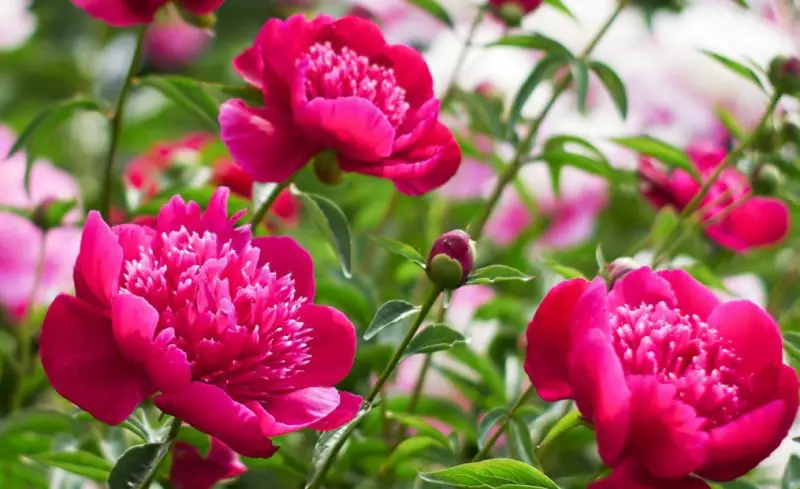Peonies are cherished garden favorites, renowned for their large, fragrant, and colorful blooms that signal the arrival of spring. These classic perennials bring timeless beauty to any garden setting, whether planted in borders, containers, or as standalone specimens. However, despite their popularity, many gardeners struggle to coax their peonies into blooming abundantly. Achieving a flourishing display of peony flowers requires an understanding of their unique growing needs and a bit of patience.
In this article, we will explore in detail how to make peonies bloom abundantly in your garden by providing the right planting conditions, care techniques, and seasonal management. Whether you are planting herbaceous peonies, tree peonies, or intersectional (Itoh) varieties, these tips will help you unlock their full flowering potential.
Understanding Peony Growth and Blooming Habits

Before diving into care tips, it is important to understand the basic biology and growth cycle of peonies. Peonies are herbaceous or woody perennials that emerge from underground tuberous roots or woody stems, depending on the type. Their blooming typically occurs in late spring to early summer, but timing can vary with variety and climate.
Peonies produce buds on established wood or crowns that have matured sufficiently. For this reason, new plantings may take two to three years before producing a robust floral display. Patience is essential, as rushing peonies into bloom by disturbing roots or improper care can lead to poor flowering.
The plant’s flowering success depends largely on adequate sunlight, soil quality, proper planting depth, watering, and temperature conditions during dormancy and growth. Each of these factors influences bud development and bloom size.
Choosing the Right Location and Soil for Peonies
Selecting an appropriate planting site is one of the most crucial factors in encouraging abundant peony blooms. Peonies thrive best in full sun, requiring at least six hours of direct sunlight daily. Insufficient sunlight often leads to weak plants with few flowers.
The soil should be well-drained but rich in organic matter. Heavy clay or waterlogged soils can cause root rot and stunt plant growth, resulting in fewer blooms. Amending garden soil with compost or aged manure enhances fertility and drainage, creating an ideal environment for healthy root development.
Planting peonies in raised beds or mounded areas can improve drainage in wetter climates. Additionally, avoid locations near large trees or shrubs that compete for nutrients, water, and sunlight.
Proper Planting Depth and Timing to Promote Flowering
Correct planting depth plays a significant role in peony bloom production. Peony tubers or crowns should be planted shallowly, with eyes (buds) no more than 1 to 2 inches below the soil surface. Planting too deeply can inhibit flowering or cause delays by preventing the buds from receiving adequate warmth and light.
The best time to plant peonies is in early fall, typically six weeks before the first expected frost. This allows roots to establish during cool, moist conditions while preparing the plant for winter dormancy. Fall planting encourages stronger root systems and healthier spring growth, which leads to better blooms.
If planting container-grown peonies, the same depth and timing guidelines apply. Transplanting should be done carefully to avoid damaging roots, and watering should be thorough but not excessive.
Providing Consistent Watering Without Overwatering
Watering is essential for peony health and bloom development, but it must be balanced carefully. Peonies prefer moist but not soggy soil conditions. Overwatering leads to root rot and fungal diseases that weaken the plant and reduce flower production.
During the growing season, watering deeply once a week is typically sufficient, especially during dry spells. Early morning watering is ideal, as it allows foliage to dry during the day, minimizing disease risk.
During the dormancy period in fall and winter, watering requirements decrease significantly. Avoid watering heavily during these times to prevent root damage.
Monitoring soil moisture regularly helps you adjust watering according to weather conditions and soil type, ensuring peonies receive adequate hydration to support abundant blooms.
Fertilizing Peonies to Encourage Robust Flowering
Nutrient availability directly impacts peony growth and flower production. Peonies benefit from nutrient-rich soil but are sensitive to excessive nitrogen, which promotes leafy growth at the expense of flowers.
Applying a balanced fertilizer formulated for flowering perennials in early spring supports healthy foliage and encourages bud formation. Fertilizers with a higher phosphorus content are especially beneficial for flowering.
Organic options such as compost, bone meal, or well-rotted manure can provide slow-release nutrients that enhance soil health and plant vigor.
Avoid fertilizing late in the growing season, as this can stimulate tender new growth vulnerable to frost damage.
Managing Peony Pruning and Deadheading for More Blooms
Pruning is important for plant health and bloom quality. For herbaceous peonies, cutting back foliage to the ground after the first frost helps prevent diseases and prepares the plant for winter.
Tree peonies require minimal pruning but benefit from removing dead or damaged stems in early spring. Deadheading spent flowers throughout the blooming period encourages the plant to direct energy into new growth rather than seed production, potentially extending the flowering season.
Proper pruning techniques improve air circulation, reduce disease risk, and maintain the plant’s overall shape and vigor, all contributing to more abundant blooms.
Protecting Peonies From Pests and Diseases That Affect Flowering
Peonies can be susceptible to pests such as aphids, thrips, and botrytis blight, which can damage flower buds and reduce bloom quality.
Regular inspection for early signs of infestation allows prompt treatment with insecticidal soaps, neem oil, or appropriate fungicides.
Maintaining good garden hygiene, such as removing dead plant debris and avoiding overhead watering, reduces disease pressure.
Healthy plants are more resistant to pests and diseases, so providing optimal care is the first line of defense in promoting prolific flowering.
Supporting Peonies Through Winter Dormancy for Spring Blooms
Peonies require a cold winter dormancy period to trigger bud development for spring blooms. Exposure to chilling temperatures allows plants to rest and recharge for vigorous growth in the spring.
Mulching in late fall helps protect roots from extreme cold and temperature fluctuations while conserving soil moisture.
In regions with mild winters, artificially providing chilling through refrigeration of dormant roots before planting can improve bloom potential.
Ensuring peonies experience adequate cold helps synchronize flowering and promotes larger, healthier blooms.
Troubleshooting Common Blooming Problems
Several factors can cause poor or no blooming in peonies. Common issues include planting too deep, insufficient sunlight, over-fertilization with nitrogen, improper watering, or immature plants.
Addressing these factors by adjusting planting depth, relocating to sunnier spots, using balanced fertilizers, and providing proper watering schedules usually restores flowering vigor.
Patience is key, as peonies may take a few seasons to reach full bloom capacity.
FAQs about How to Make Peonies Bloom
Why Are My Peonies Not Blooming?
Peonies may not bloom due to planting too deep, insufficient sunlight, excessive nitrogen fertilizer, or immature plants that need time to mature.
How Much Sunlight Do Peonies Need to Bloom?
Peonies require at least six hours of direct sunlight daily to produce abundant and healthy flowers.
When Should I Plant Peonies for Best Blooming Results?
Early fall is the best time to plant peonies, allowing roots to establish before winter dormancy and encouraging spring blooms.
How Should I Water Peonies to Encourage Flowering?
Water deeply but infrequently, keeping the soil moist but well-drained to avoid root rot and support healthy growth.
Can Peonies Bloom in Containers or Only in Gardens?
While peonies are typically grown in gardens, some varieties can bloom well in containers with proper care and adequate sunlight.
Conclusion: Achieving Abundant Peony Blooms in Your Garden
Making peonies bloom abundantly requires attention to detail and an understanding of their natural requirements. Choosing the right site, planting at the proper depth and time, managing water and nutrients, pruning correctly, and protecting against pests all contribute to a healthy, flowering peony plant.
With patience and consistent care, your garden can be transformed into a stunning display of peony blooms year after year, bringing beauty and fragrance that enrich outdoor living spaces.






